At the site of Co Loa, researchers are examining the foundations of power in Southeast Asia.

ABOUT 10 MILES OUTSIDE of Hanoi’s city center, where the urban environment gives way to rice paddies and vegetable stalls, a steep hill rises abruptly out of the landscape and runs adjacent to the road for half a mile before turning away. Closer examination reveals that it is man-made—substantial, certainly, and old. The rise is, in fact, the outer edge of the remains of Co Loa, Vietnam’s earliest urbanized center, an earthen rampart that, more than 2,000 years after it was built, still defines the land it occupies. The structure, says Nam C. Kim, an archaeologist at the University of Wisconsin–Madison, represents a turning point in Vietnam’s history, the moment when a powerful, centralized state evolved out of the region’s proto historic Iron Age culture.
Co Loa is a city that shouldn’t have existed, at least not at the time and on the scale that its ramparts suggest. The lowest levels of Co Loa’s walls have been dated as far back as 300 b.c., a period in which, according to many researchers, centralized states had not yet evolved in Southeast Asia. Instead, scholars have long believed that the region’s only settlements were small, moated, and loosely organized at best. Such minor sites formed part of Vietnam’s ancient Dongson culture, a society known for its impressive ceremonial bronze drums. The Dongson left behind no written records, and their scattered burials and archaeological sites are linked to one another only by the distinctive bronze work—drums, daggers, vessels—that suggests a shared cultural production.
This story is from the July/August 2016 edition of Archaeology.
Start your 7-day Magzter GOLD free trial to access thousands of curated premium stories, and 8,500+ magazines and newspapers.
Already a subscriber ? Sign In
This story is from the July/August 2016 edition of Archaeology.
Start your 7-day Magzter GOLD free trial to access thousands of curated premium stories, and 8,500+ magazines and newspapers.
Already a subscriber? Sign In
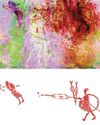
A Very Close Encounter
New research has shown that human figures painted in red on a rock art panel in central Montana depict individuals engaged in a life-or-death encounter during an especially fraught historical moment.
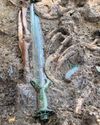
A Sword for the Ages
A zigzag pattern, now tinged with the green-blue patina of oxidized metal, adorns the octagonal hilt of a rare sword dating to the Middle Bronze Age in Germany (1600-1200 B.C.) that was recently excavated in the Bavarian town of Nördlingen.
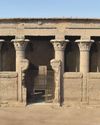
Ancient Egyptian Astrology
For centuries, layers of soot have coated the ceilings and columns in the entrance hall of Egypt's Temple of Esna. Now, an Egyptian-German team of researchers, led by Hisham El-Leithy of the Egyptian Ministry of Tourism and Antiquities and Christian Leitz of the University of Tübingen, is restoring the temple's vibrant painted reliefs to their original brilliance.
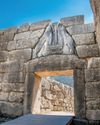
BRONZE AGE POWER PLAYERS
How Hittite kings forged diplomatic ties with a shadowy Greek city-state
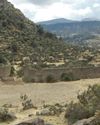
RITES OF REBELLION
Archaeologists unearth evidence of a 500-year-old resistance movement high in the Andes

Secrets of Egypt's Golden Boy
CT scans offer researchers a virtual look deep inside a mummy's coffin

When Lions Were King
Across the ancient world, people adopted the big cats as sacred symbols of power and protection

UKRAINE'S LOST CAPITAL
In 1708, Peter the Great destroyed Baturyn, a bastion of Cossack independence and culture

LAPAKAHI VILLAGE, HAWAII
Standing beside a cove on the northwest coast of the island of Hawaii, the fishing village of Lapakahi, which is surrounded by black lava stone walls, was once home to generations of fishers and farmers known throughout the archipelago for their mastery of la'au lapa'au, or the practice of traditional Hawaiian medicine. \"

A MORE COMFORTABLE RIDE
Although the date is much debated, most scholars believe people 5,000 years ago. For thousands of years after that, they did so without saddles. \"In comparison with horse riding, the development of saddles began relatively late, when riders began to care more about comfort and safety in addition to the horse's health,\" says University of Zurich archaeologist Patrick Wertmann.